|
Central and Eastern Australia experienced heavy showers and thunderstorms causing storm damage and flooding rivers. At Forbes Airport Aws (New South Wales), 118 mm fell in 24 hours.
A trough extending from the Indian Ocean into central Australia and a corresponding surface low at its forward side caused heavy showers and thunderstorms in Australia. The states of Victoria and
New South Wales in the southeast of the country were particularly affected. Already on Friday, heavy showers occurred in Tasmania, as well as in the northeast of Victoria and in New South Wales.
On Saturday, the small low pressure area at the front of the trough intensified, forming a cold front over central and southern Australia. Widespread showers and thunderstorms developed along the
forward side of the low pressure area and the front, which extended from the Northern Territory across South Australia and into western New South Wales and Victoria on Saturday night. This resulted
in strong winds, hail and flash flooding.
|
500 hPa Geopotential and Temperature, as well as sea level pressure, source:
wetter3
|
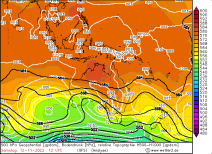 |
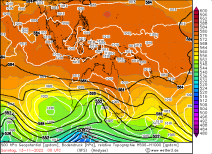 |
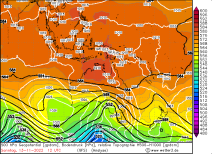 |
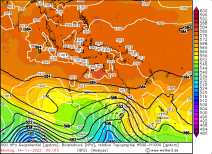 |
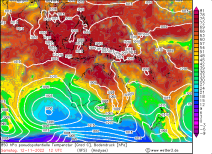 |
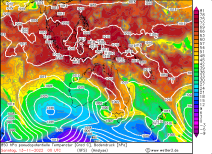 |
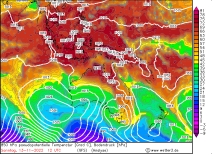 |
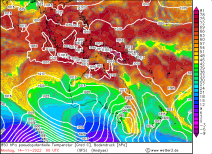 |
The weather conditions persisted on Sunday, and severe thunderstorms with lots of heavy rain continued to develop. The extensive rainfall caused severe flooding on several rivers in New South Wales.
Particularly affected were the Barwon and Darling Rivers, Macquarie River, Lachlan River, Murrumbidgee River, Murray River, Bogan River, Namoi River, Narran River, Culgoa River in New South Wales.
The Murray River in Victoria also experienced high water.
The weather station at Forbes Airport Aws recorded daily precipitation of 118 mm on November 13, and the Bathurst Airport Aws (86 mm), Walgett - Brewon Aws (71 mm), and Falls Creek Aws (60 mm)
stations also reported daily precipitation in excess of 50 mm. Mean wind speeds of 106 kph were recorded at the station at White Cliffs in New South Wales, and more than 100 kph were also reported
in Victoria (102 kph on Mount William).
The weather in Australia during the last weeks and months is strongly influenced by ENSO. A pronounced La Nina phase ensures that warm and humid air over the Pacific Warm Pool is directed to the east
of Australia and where usually inland a semi-arid climate prevails, it rains very heavily and also much further south than usual in the rainy season. In the winter of 2010 / 2011, La Nina brought more
than 500 mm of rain to Rockhampton within 4 weeks, four times as much as usual.
Text: FS
November 15, 2022
|




